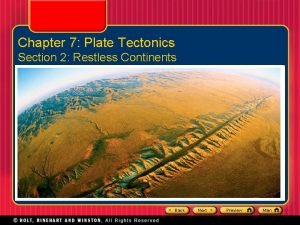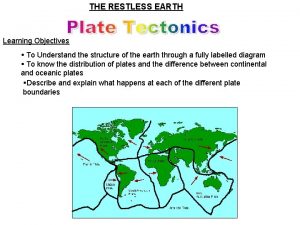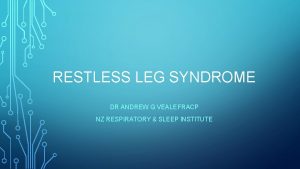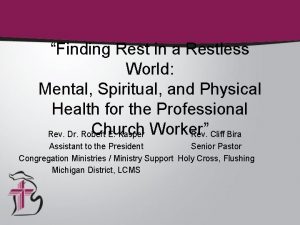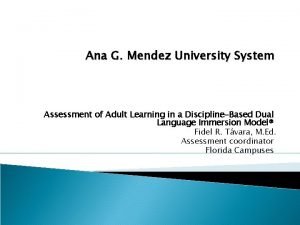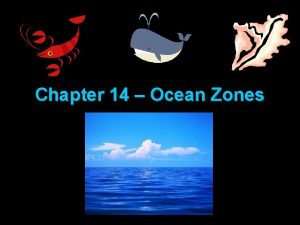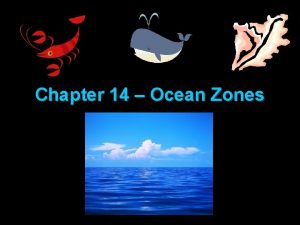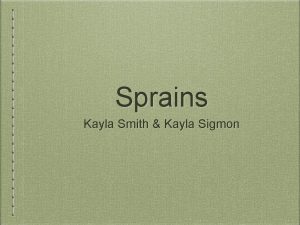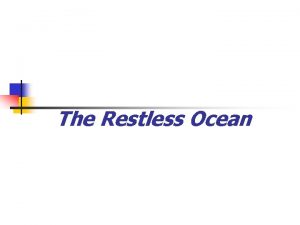The Restless Ocean Kayla Phillipson Exploring the Ocean










- Slides: 10

The Restless Ocean Kayla Phillipson

Exploring the Ocean • Ocean water is mostly salt water. • What is salinity? • It is the proportion of dissolved salt in water. • Table salt is the most abundant salt in the ocean. • The salt that is in the ocean comes form volcano's and rivers. • Rain water slowly dissolves salt out of surface rocks. • Salt can be removed form ocean water by plants and animals. • Light and temperature decrease with depth, whereas pressure increases.

Exploring the Ocean • Light can only go down the 200 meters. • The deep water moves very slow and is very cold. • Continental Shelf- is a sloping plain that forms an apron of shallow water along the edge of the continents. • The Mariana Trench is the deepest point in the ocaen. It is more than 11 kilometers below the sea level. • The average depth of oceans is 3. 8 kilometers.


Ocean Currents • The ocean currents can be affected by many things such as winds, the rotation of earth, and the position. • What is a surface current? • It is a stream of ocean water that continuously moves in the same path. When the wind blows the surface of the ocean which then causes a flow of surface currents. • What is a Globe Surface Current? • It’s a currents that reflects the effects of wind patterns in the atmosphere. • The Gulf Stream Current is a major current, it carries worm water form the Gulf of Mexico to the North Atlantic Ocean. • What is an upwelling? • An upwelling is when water form the deep part of the ocean comes to the surface. • In upwelling winds blow warm surface water aside. Which allows cold water from the deep ocean to rise and take


Wave Erosion and Deposition • On coastlines waves are the major cause for erosion. It is the amount to energy that the waves have when they hit the coast line. • Hydraulic action and abrasion is responsible for most wave erosion. • When the waves hit cracks in the rocks hydraulic action will happen. As the water tries to drain another wave will come and will force more water into the crack, which causes the crack to get bigger. • Abrasion causes rocks to break down into smaller pieces.

Wave erosion

Wave Erosion and Deposition • What is longshore drift? • Is the process that moves sand along a shore. • Waves that carry sand to the beach, hit the beach at an angle and when the water and the sand flow back which then produces a zigzag motion. • When current and waves deposit sediment in bays and inlets. That happens when the water starts to slow down. • A beach is sediment, or sand, that has formed a shoreline. • When currents and waves hit a bend in the shoreline it tends to slow down, which allows the sediment to be deposited.


